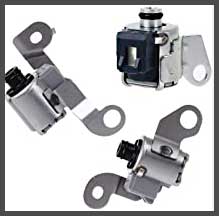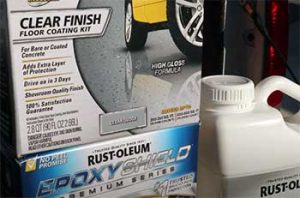Owning a Toyota 4Runner is a source of pride for enthusiasts who appreciate its powerful engine output and rugged aesthetics making it suitable for different driving conditions including tough terrains.
However, like other vehicles on the road today; mechanical complications can arise over time which also includes problems associated with the transmission solenoid- one of the most prevalent issues experienced by drivers.
In this article, we will delve into the world of Toyota 4Runner transmission solenoid problems, exploring the symptoms, causes, and solutions.
Understanding The Transmission Solenoid

Before we get into the nitty-gritty of Toyota 4Runner transmission solenoid issues, it’s important to understand what the transmission solenoid does.
The transmission solenoid is an electro-hydraulic valve responsible for controlling the flow of fluid in and out of the transmission.
It plays a crucial role in shifting gears smoothly, making it a vital component for your vehicle’s overall performance.
Common Problems With Toyota 4Runner Transmission Solenoid
Owners of Toyota 4Runners have reported a few transmission solenoid issues that can cause both minor and major inconveniences. Let’s take a look at some of the most common problems you might face:
- Stuck Solenoid Valve
A stuck solenoid valve is one of the most common problems with Toyota 4Runner transmission solenoids. This can occur due to debris, dirt, or metal shavings in the transmission fluid that cause the valve to get stuck. This issue can lead to erratic shifting, delayed gear changes, or even the inability to shift gears at all.
- Malfunctioning Solenoid
Another common problem is a malfunctioning solenoid, which can be caused by a variety of factors, including a worn-out solenoid, electrical issues, or poor connections. This issue can cause erratic shifting, slipping gears, or even a complete failure to shift.
- Faulty Wiring or Connectors
Faulty wiring or connectors can also cause problems with the Toyota 4Runner’s transmission solenoid. This can lead to intermittent or complete loss of solenoid function, resulting in poor shifting or gear slippage.
Also Read: Problems With 41TE Transmission.
Symptoms of a Faulty Transmission Solenoid in Toyota 4Runners

Now that we know the importance of a transmission solenoid, let’s discuss the symptoms that might indicate a faulty solenoid in your Toyota 4Runner:
- Erratic Shifting: One of the most common symptoms of a failing transmission solenoid is erratic shifting. You may experience sudden and unexpected gear changes or difficulty shifting gears altogether.
- Transmission Slipping: Another symptom of a bad solenoid is transmission slipping. This occurs when the transmission fails to engage properly, causing the vehicle to feel like it’s losing power.
- Delayed Gear Engagement: If you notice a delay between pressing the accelerator and the vehicle moving, it could be due to a faulty solenoid. The transmission may take longer to engage the gear, resulting in a lack of power.
- Check Engine Light: A faulty solenoid can trigger the check engine light on your dashboard. While the light can indicate various issues, a diagnostic scan can confirm if it’s related to the transmission solenoid.
- Poor Fuel Efficiency: A bad transmission solenoid can negatively impact your Toyota 4Runner’s fuel efficiency. The vehicle may struggle to shift gears, leading to increased fuel consumption.
Fixing Toyota 4Runner Transmission Solenoid Problems
When it comes to addressing Toyota 4Runner transmission solenoid problems, the solution depends on the specific issue at hand. In many cases, a professional mechanic can replace the faulty solenoid or repair the wiring, restoring your vehicle’s performance.
However, in more severe cases, a complete transmission rebuild or replacement may be necessary.
Also Read: What Are The Differences Between Transmission Flare And Slipping?
Frequently Asked Questions (FAQ)
Some common symptoms of a faulty transmission solenoid include erratic shifting, difficulty changing gears, transmission slipping, check engine light or transmission warning light on the dashboard, poor fuel economy, and a noticeable decrease in performance.
When the shift solenoid goes out, it can cause a range of issues, such as erratic shifting, slipping gears, or even a complete failure to shift. This can greatly affect your vehicle’s performance and fuel economy, and can potentially lead to more serious transmission damage if left unaddressed.
While it may be possible to drive your car with a bad transmission solenoid, it’s not recommended. Continuing to drive with a faulty solenoid can cause further damage to your transmission and lead to more expensive repairs down the line. It’s best to have your vehicle checked by a professional mechanic as soon as possible to avoid additional issues.
Driving on a bad shift solenoid for an extended period is not advisable, as it can lead to more severe transmission damage and costly repairs. If you suspect your vehicle has a bad shift solenoid, it’s important to address the issue as soon as possible to prevent further complications.
While Toyota 4Runners are generally reliable vehicles, they can still experience transmission problems like any other vehicle. Some of the most common transmission issues for 4Runners include problems with the transmission solenoid, as discussed in this article. Regular maintenance and prompt attention to any issues can help ensure a long and healthy life for your 4Runner’s transmission.
Final Thoughts
Toyota 4Runner transmission solenoid problems can be frustrating, but understanding the symptoms, causes, and solutions can help you address these issues effectively.
By paying close attention to your vehicle’s performance and seeking professional help when necessary, you can keep your 4Runner running smoothly for years to come.
Remember, it’s crucial to address transmission solenoid issues as soon as you notice any symptoms, as continuing to drive with a faulty solenoid can lead to more severe transmission damage and expensive repairs.
Regular maintenance and prompt attention to any issues will help ensure a long and healthy life for your Toyota 4Runner’s transmission.



